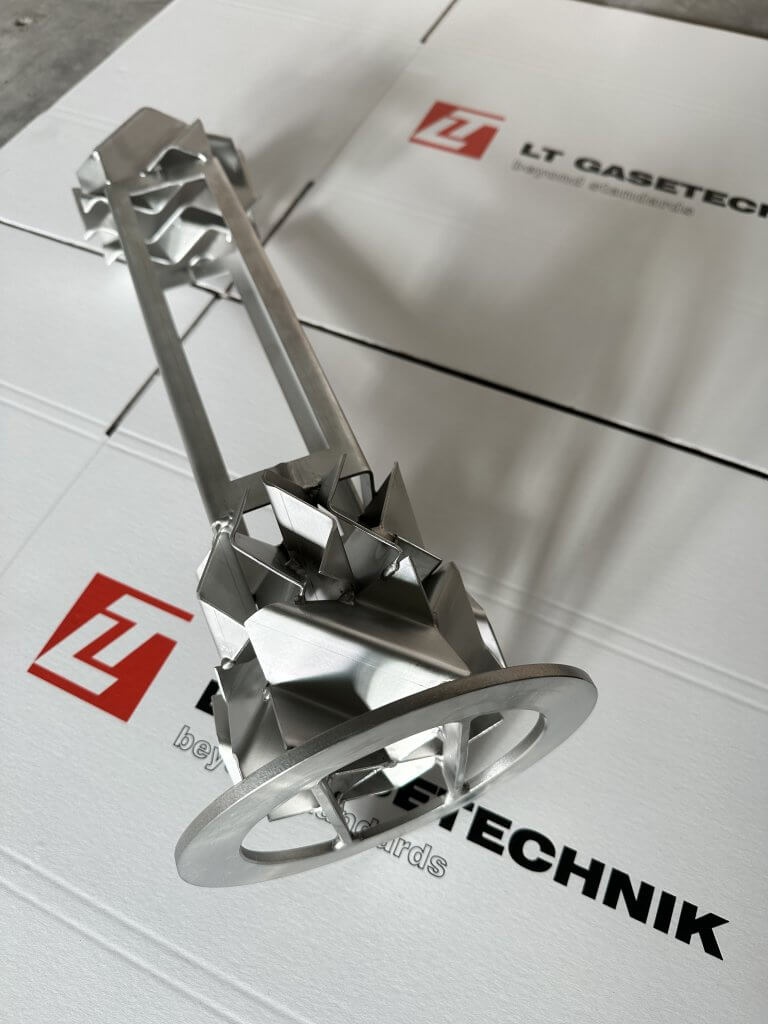We are regularly asked what the actual gas mixer element, i.e. the mixer, looks like. Here is a picture of the gas mixer element, which is inserted into the pipeline and mixes the gases. Why do you do this now?
DVGW 213(A) “Systems for the production of fuel gas mixtures” states (in our translation from German): “The mixer should combine gas streams in a pipeline in such a way that a homogeneous gas mixture is produced after the shortest possible pipe route. When selecting the mixer, the load range (constant load, variable load with narrow or wide limits), the pressure of the gases to be mixed, the required mixed gas pressure and the mixing ratio (constant or variable) are decisive. (…) If the recipient of the mixed gas is relatively far away from the mixing point, it may also be sufficient if the gases to be mixed are brought together in the pipeline without a mixing device. It must be ensured that sufficient mixing is achieved.” This describes exactly why we use these very expensive mixers in the first place. Typically, sampling from the gas stream to determine the mixing quality (e.g. proportion of mixed gas, calorific value, oxygen proportion, etc.) takes place very shortly after the gases are brought together, which is why we use this individually calculated and designed mixer. However, improving the mixing quality by reducing the diameter finds its limits in the resulting increase in pressure loss.

Our static mixer alternately divides the material flow with flow-influencing elements and then brings it back together. This allows us to create a homogeneous gas mixture that we can analyze without streaks influencing the measurement result. These gas mixer elements are specially designed, fluid mechanically calculated with CFD simulations and manufactured to measure. Of course, this is correspondingly expensive, but in this way we ensure careful mixing with a low pressure loss and in a short distance.
For more information on gas mixing plants, please contact us.
We look forward to working at your tailor made solution: mail@lt-gasetechnik.com
#Mixer #Gasmixer #Gasmixerelement


